Membrillo (Sweet Quince Paste)
This post may contain affiliate links. See my disclosure policy.
Popular throughout many countries, membrillo (aka, quince paste or quince cheese) is incredibly versatile and one of the most delicious confections you’ve ever tasted! It also makes an excellent and unique gift for friends and family who appreciate good food. This membrillo recipe is easy to make and freezes well so you can conveniently have it on hand whenever you have friends over or are in the mood for a delicious snack!
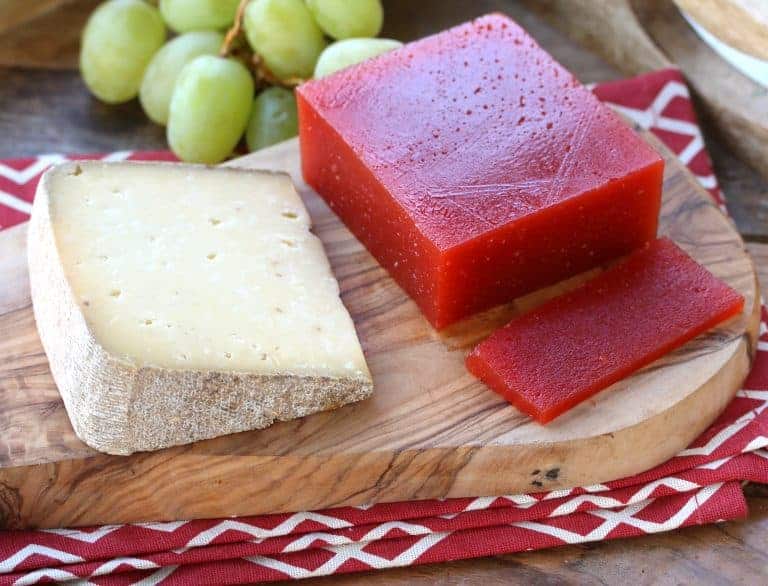
What is Quince?
The quince fruit has been prized since ancient times and up until around the early 19th century was still found in the garden of many homes. As long ago as 1922, the great New York pomologist U. P. Hedrick rued that “the quince, the ‘golden apple’ of the ancients, once dedicated to deities, and looked upon as the emblem of love and happiness, for centuries the favorite pome, is now neglected and the least esteemed of commonly cultivated tree-fruits.”
Though highly revered for so long, it has sadly fallen out of favor to the point where few people have even heard of it let alone tasted one. How that happened I can’t imagine because it is one of the most under-appreciated and spectacular fruits out there.
Though it is in the same family as apples and pears, the quince is practically inedible raw, no matter how ripe, and has to be cooked. And though it is considered less versatile than apples and pears, and is challenging to find anymore, it has such an incredible and unique flavor it is worth every effort to find it.
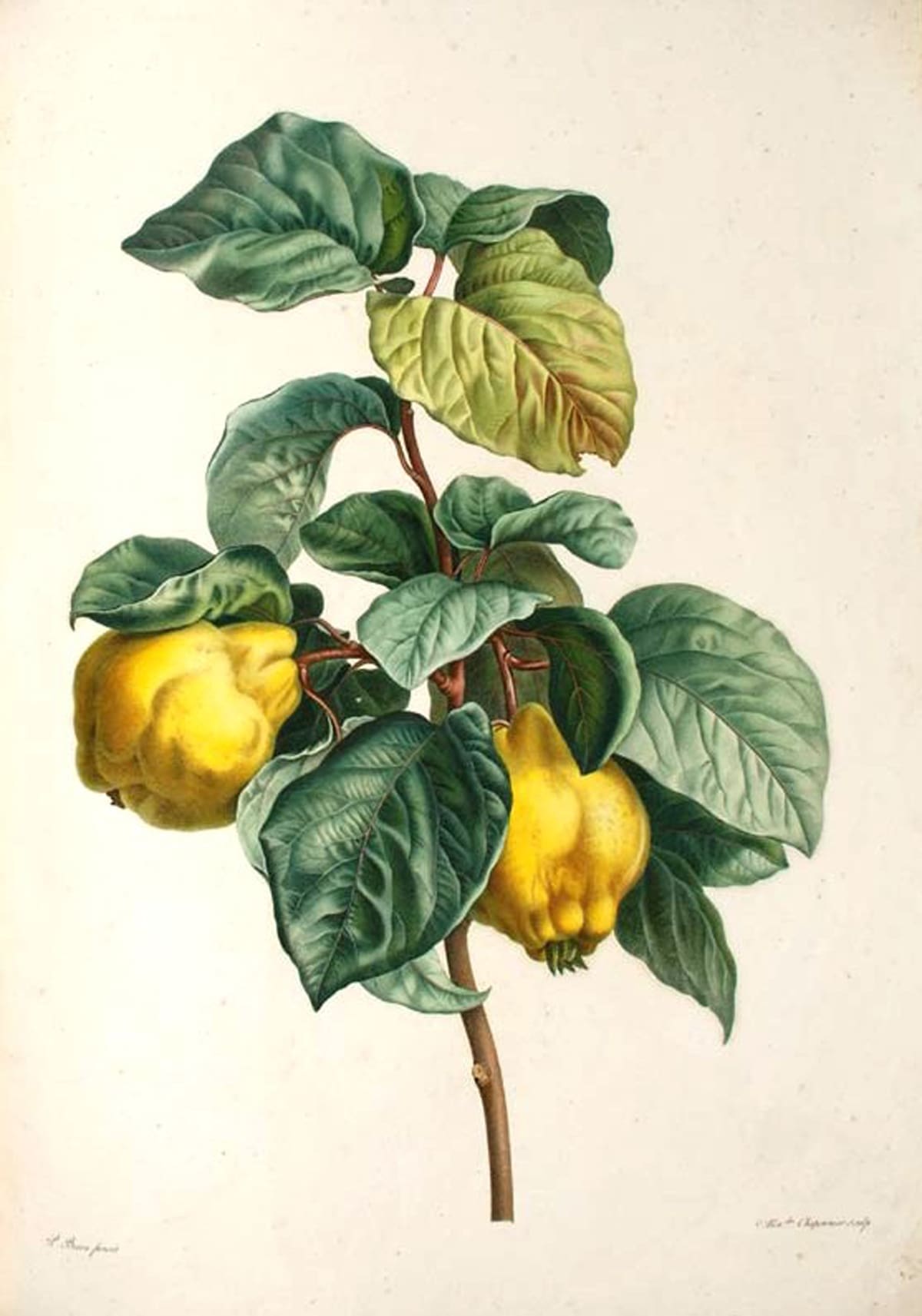
Some grocery stores carry it during the Christmas season but you’ll likely need to ask the produce manager to order some for you. My solution was to plant a quince tree a couple of years ago and eagerly look forward to the first fruits next year!
Today we’re making what is probably the most famous application of the quince besides quince jelly: Membrillo.
What is Membrillo?
Membrillo is a sweet, thick, sliceable firm paste made from quince that originated in Spain and is especially popular during the Christmas holidays. It is now a popular confection in many countries. It’s also known as Dulce de membrillo (Spain, Ecuador, Argentina, Chile, Mexico, Uruguay), marmelada (Portugal, Brazil), pâte de coing (France), Quittenkäse (Germany), birsalmasajt (Hungary), and quince cheese (New England) or quince paste (UK, Canada, Australia), to name a few.
The quince has been a highly revered fruit since ancient times and this recipe is thought to have Roman origins as early as the 4th or 5th century AD and used honey instead of sugar.
Quince paste is usually sold in squares and is served by cutting it into thin slices to accompany cheese (in Spain, membrillo and manchego cheese are inseparable), served on crackers, spread on toast or sandwiches, served with breakfast, eaten plain as a sweet confection (and commonly rolled in sugar), served with meats, and is also used to stuff pastries and spread in cakes.
I’ll never forget the first time I tried membrillo. It was also the first time I had ever tried quince. Oh, the aroma and the flavor! It’s among the most unique and wonderful smells and flavors I’ve encountered. It’s hard to describe. It’s not anything like apple or pear. The best word I can think of to describe the flavor is sweetly floral. It has a highly aromatic, floral flavor, almost like it’s made with essential oils of wild English roses. After having tasted quince, I now understand why quince in ancient times was considered a fruit of the gods. It is divine.
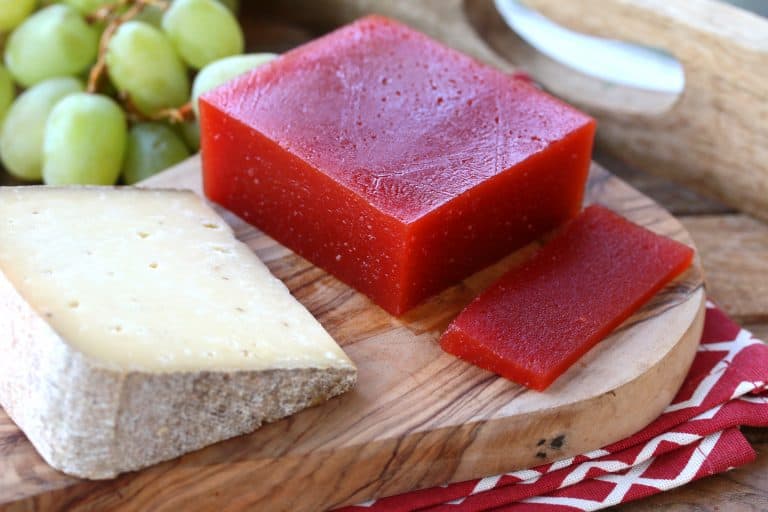
How to Make Membrillo
Making membrillo is extremely easy. Many recipes call for cooking the quinces whole, then straining the water, then peeling and coring them, then weighing the pulp and then simmering it with sugar. None of that extra fuss is remotely necessary.
First of all, the quince flesh itself is so high in pectin that simmering it with the peels and seeds is unnecessary. Not only that, leaving the skins on will result in a membrillo that is slightly browner in color. Just peel and core your quinces from the start and throw the diced quince directly into the pot with the sugar and water. Secondly, there is no need to strain the water and then weigh the pulp. Simply weigh the peeled, cored quince at the start and add it to the pot with the sugar and a little water. Stew the quince and then simply puree the mixture and let it set. That’s it. The result will be a firm membrillo with a perfectly sliceable consistency and heavenly flavor!
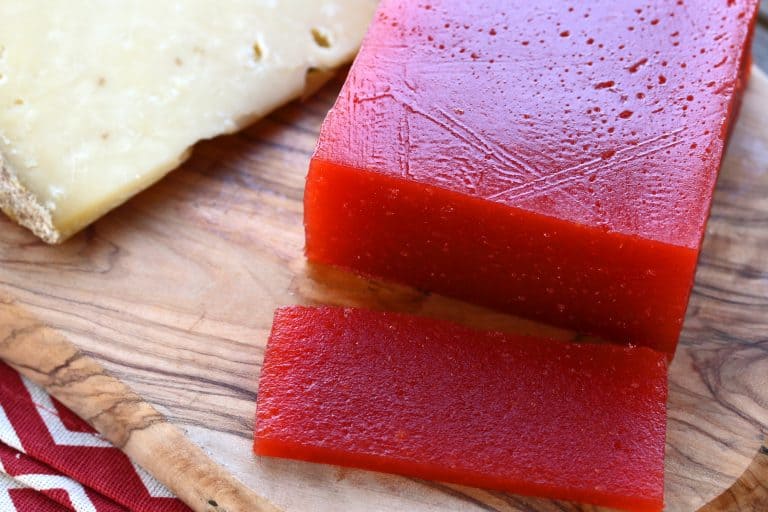
How Long Does Membrillo Keep?
Membrillo keeps for a long time, which is a big plus. Like jam, the sugar acts as a preservative and it will keep in the fridge for at least 3 months. In many areas of the world it’s kept at room temperature for the same length of time. It also freezes well for even longer storage.
How to Serve Membrillo
Membrillo is typically served at room temperature sliced or cubed. It’s often served as an appetizer or dessert and is paired with cheese, crackers or bread or as part of a cheese and charcuterie board. Serve membrillo with hard and semi-hard cheeses like Manchego, a classic pairing.
Alternatively, membrillo can also be used as an ingredient in various dishes, such as a filling for tarts and pastries, or as a glaze for meats.
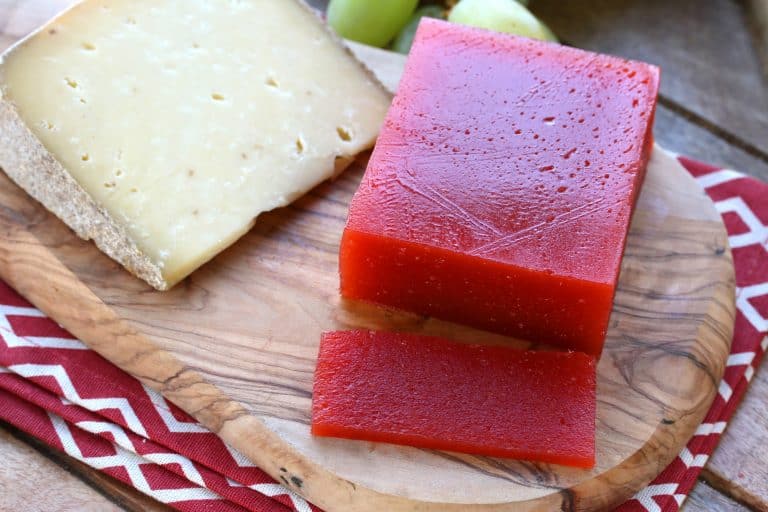
Membrillo Recipe
Let’s get started!
Select ripe, fragrant quinces.
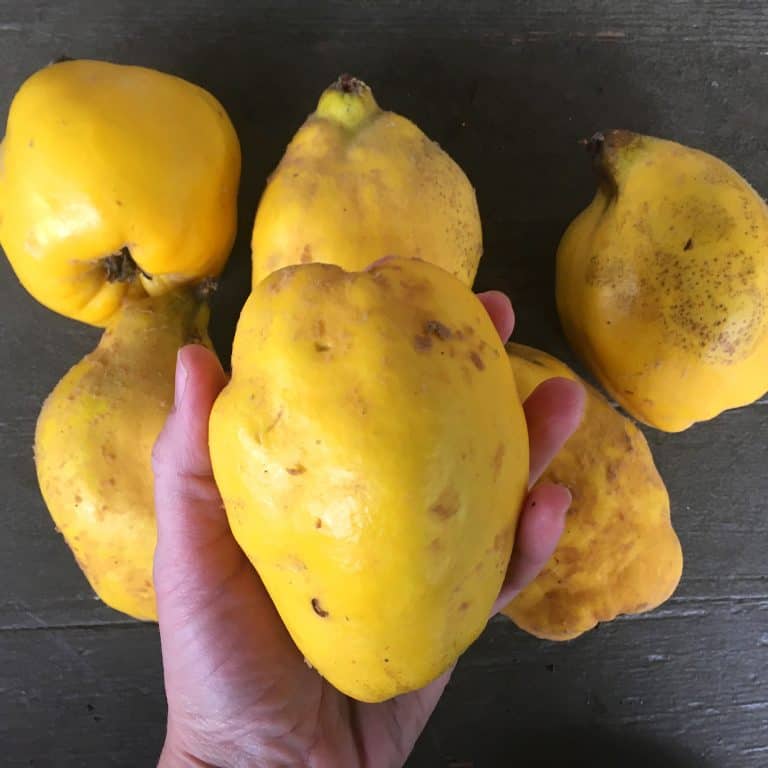
Wash and remove any of the fuzz from them. Peel and core the quinces and dice into 3/4 inch pieces.
They will turn brown quickly, that is perfectly okay.
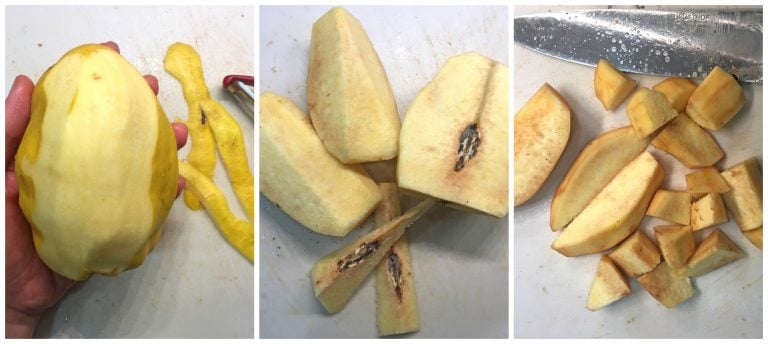
Place the diced quince in a medium pot over medium heat along with the sugar, lemon juice and water.
Bring the mixture to simmer, stirring occasionally to melt the sugar.
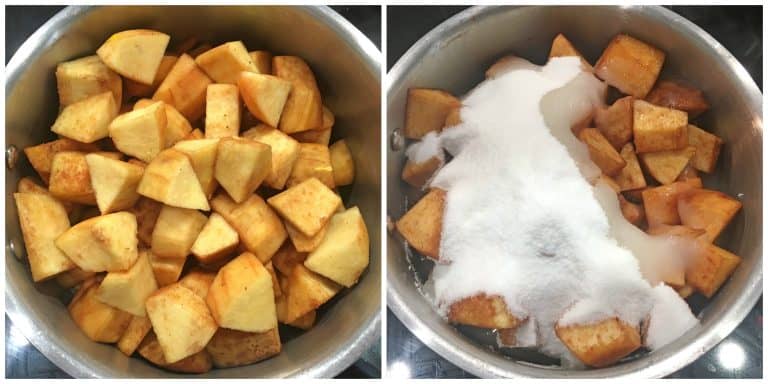
Continue to simmer over medium heat for an hour or so, stirring occasionally.
During this time the quince will progressively turn into a beautiful ruby red color.
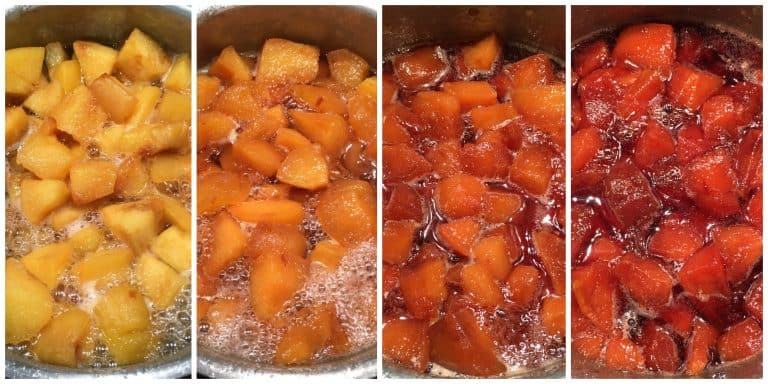
Simmer until a candy or instant-read thermometer reads 220 degrees F. This doesn’t always guaranteed it’s ready, so at this point also do a plate test to make sure the mixture is done: Spoon a little of the liquid onto a cold plate and wait a couple of minutes. Push the liquid with your finger and if it wrinkles it is ready. If it doesn’t, continue to simmer and re-test.
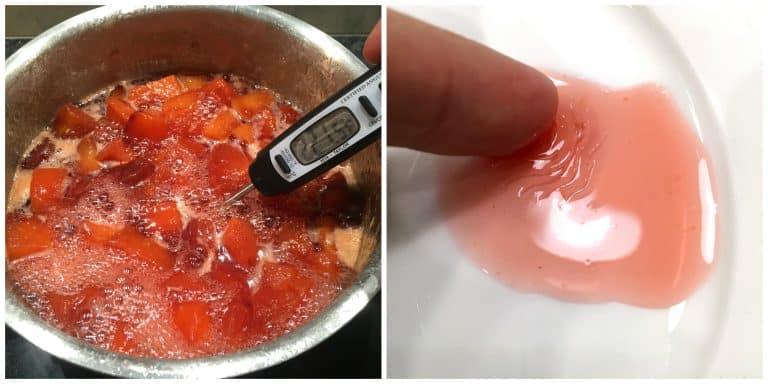
Grease a 8×8 inch glass baking dish.
Puree the mixture with an immersion blender or blend in a Vitamix or similar until smooth.
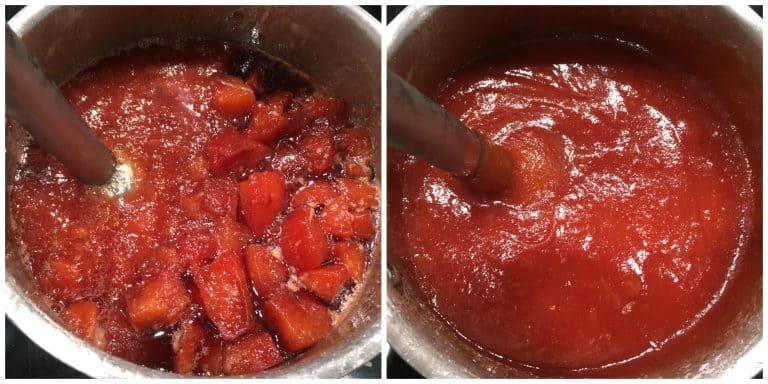
I find the immersion blender is adequate but if you want the mixture even smoother, transfer it to a Vitamix (or similar).
Pour the hot mixture into the greased baking dish.
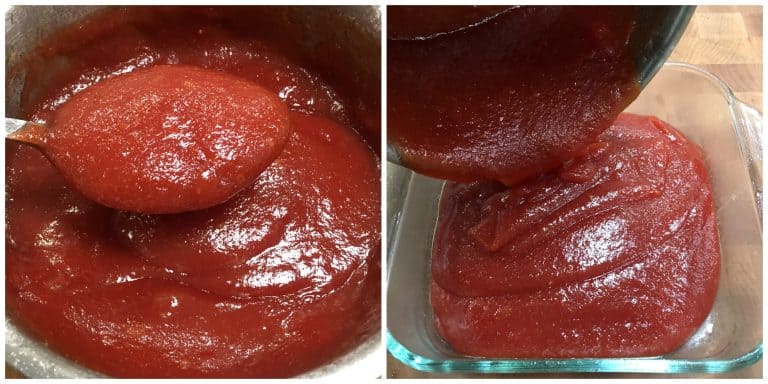
Use the back of a spoon to smooth the top. Let it cool to room temperature, then cover with plastic wrap and refrigerate for 24-48 hours until firm. Invert the membrillo / quince paste onto a platter (you may need to gently pry it out with a knife).
Note: Some recipes call for placing the membrillo in an oven at low temp (125 degrees F) for 8+ hours to firm it up. This membrillo is already firm and perfectly sliceable. If you prefer it even firmer, proceed with dehydrating it.
Cover with plastic wrap and store in the fridge for up to 3 months or longer. For longer storage membrillo can be frozen well-wrapped for up to a year.
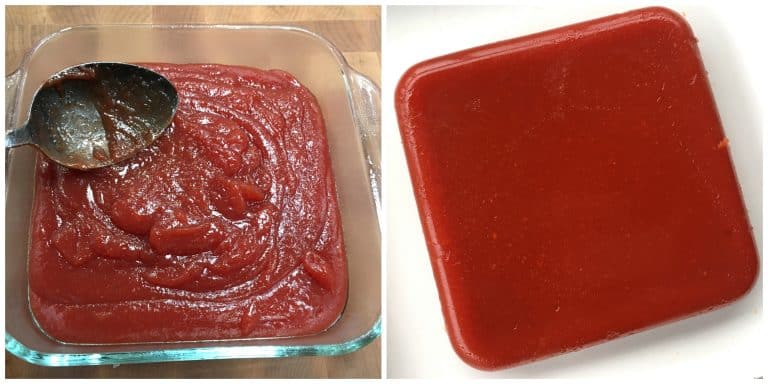
Enjoy!
Serve with your cheese & charcuterie board. Traditionally served with manchego but pairs beautifully with most aged, hard cheeses.
Alternatively, you can also cut the membrillo into small squares and dehydrate them at low temp for a while in the oven to firm them up, then roll them in sugar as a sweet confection.
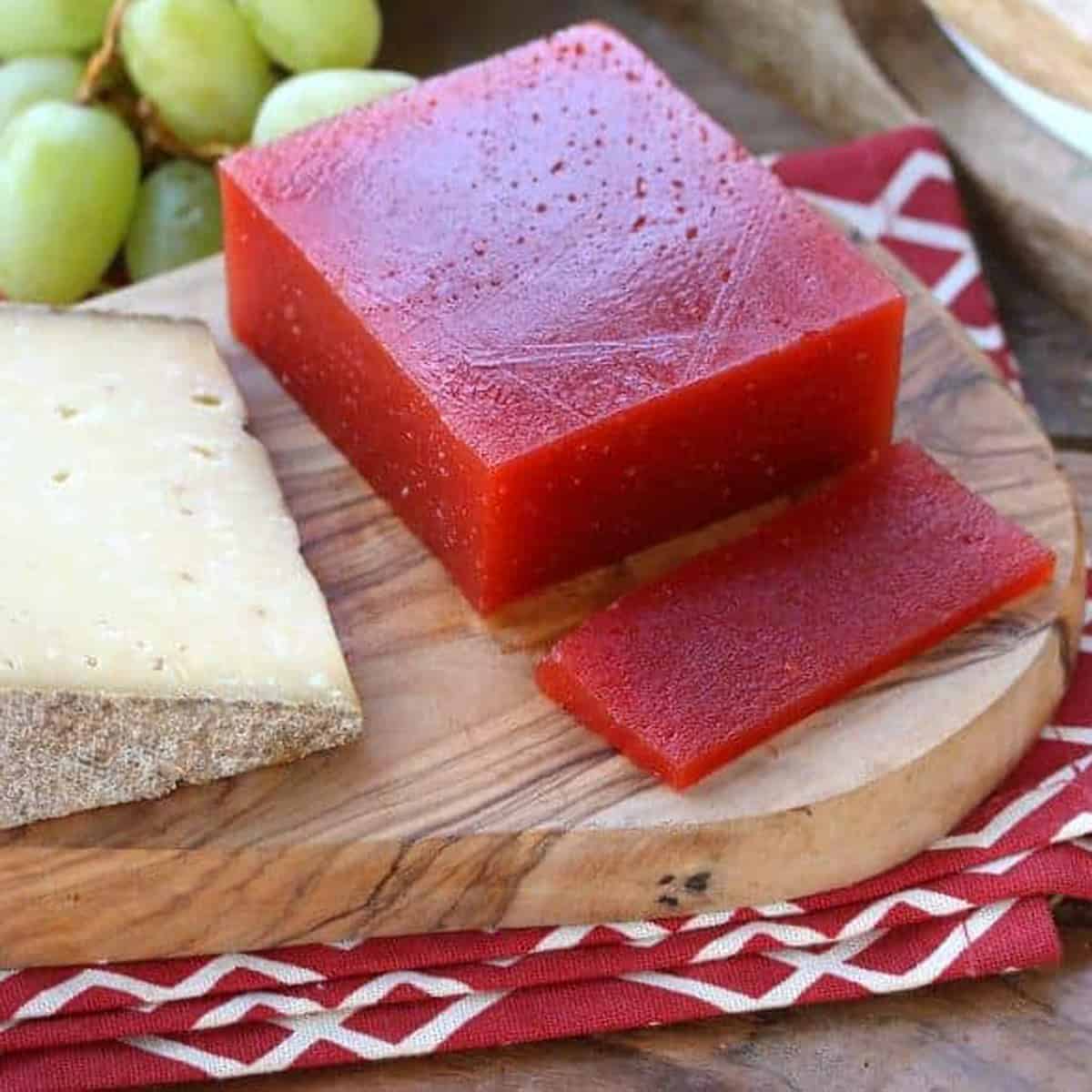
For more delicious recipes to feature on your cheese and charcuterie board, be sure to try my:
- Chicken Liver Pate
- Capicola
- Toasted Hazelnut and Date Spread
- Black Olive Tapenade
- Pork Rillettes
- Smoked Salmon Spread
- Pimento Cheese
- Pickled Asparagus
- Pickled Pepperoncini Peppers
- Pistachio Lemon Cheese Balls
- Creole Mustard
- How to Create a Cheese and Charcuterie Board
Save This Recipe
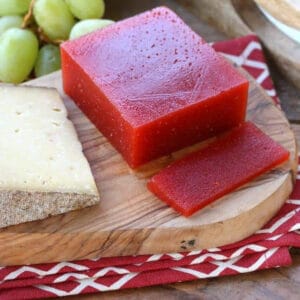
Membrillo (Sweet Quince Paste)
Ingredients
- 2.25 pounds quince , washed (remove any of the fuzz), peeled, cored and diced in 3/4 inch chunks (total weight is *after* peeling/coring) (if quince is unavailable, ask the produce manager if they can order it)
- 3 1/2 cups white granulated sugar
- 2 tablespoons lemon juice
- 1 cup water
Instructions
- Place all the ingredients in a medium pot over medium heat. Stirring occasionally, once the sugar has melted and the mixture begins to bubble, simmer uncovered for an hour or so, stirring occasionally, until the candy thermometer reads 220 degrees F. This doesn't always guaranteed it's ready, so at this point also do a plate test to make sure the mixture is done: Spoon a little of the liquid onto a cold plate and wait a couple of minutes. Push the liquid with your finger and if it wrinkles it is ready. If it doesn't, continue to simmer and re-test. The quince will increasingly change into a deep ruby red color.
- Grease a 8×8 inch glass baking dish. Puree the mixture with an immersion blender or blend in a Vitamix or similar until smooth. Pour the hot mixture into the greased baking dish and smooth the top. Let it cool to room temperature, then cover with plastic wrap and refrigerate for 24-48 hours until firm. Invert the membrillo / quince paste onto a platter (you may need to gently pry it out with a knife). Note: Some recipes call for placing the membrillo in an oven at low temp (125 degrees F) for 8+ hours to firm it up. This membrillo is already firm and perfectly sliceable. If you prefer it even firmer, proceed with dehydrating it.Cover with plastic wrap and store in the fridge for up to 3 months or longer. For longer storage membrillo can be frozen well-wrapped for up to a year. Makes one 8×8 inch square of quince paste.Serve with hard and semi-hard cheeses (Manchego is classic) and bread and crackers.
Notes
Nutrition
Originally published on The Daring Gourmet November 18, 2018



















I hope I’m not speaking too soon, but my Membrillo has a beautiful deep red-pink colour and looks glossy and divine. Still hot but already setting. I used slightly less sugar but it looks amazing. Can’t wait for it to cool down. Now to find Manchega cheese in SA… Hope to serve to my guests in the guesthouse!
That sounds perfect, Suzanne! Happy eating and I hope you and your guests enjoy it!
I followed the recipe to the letter, and simmered the quince for over 3 hours but still it is slightly runny? So I have put it in a very low oven, and hopefully it will firm up!
Best recipe I have used for Membrillo.
Fantastic, thank you so much Debbie! <3
Turned out perfect 🥰 just like the photo .
Tried this with Japanese quince – turned out excellent, although had to increase sugar to compensate for lower ripeness of the fruit I had picked, ending up with almost 1:1 sugar to fruit ratio. Turned the same beautiful dark orange hue.
Fantastic, Mike, thanks so much for the feedback!
This worked perfectly! Thanks for a great recipe.
I’m so glad, Bee, thank you very much!
Its a great and thorough article, I am also into quince. I make it from the chaenomeles japonica variety. It has a more lemony flavour while Cydonia oblonga is much more apple-y.
I’m glad you enjoyed it, Balint, thank you! I’ll have to look up that variety, it sounds like a great addition to have in the orchard :)
What a perfect recipe! last time I made membrillo I refused to blend it since the quince seemed to break down just fine from the cooking – however last year’s batch was too jammy and lumpy while this year’s, following your recipe and immersion blending – came out wonderfully. Didn’t even need a full day in the fridge to set, it slices just beautifully. I doubled the recipe and added 2 teaspoons extra of lemon juice towards the end. Thanks Kimberly!!
Fantastic! I’m so glad you enjoyed it, Stella, and really appreciate the feedback, thank you!
Hello, thank you for your recipes. May I please clarify,
Do I need 1.2kg of quince (after peeling and coring? Therefore I would buy more, so I have that weight after prep?). Thank you.
Hi Gayle, yes the total weight is *after* peeling and coring them, so buy some extra. Happy cooking! :)